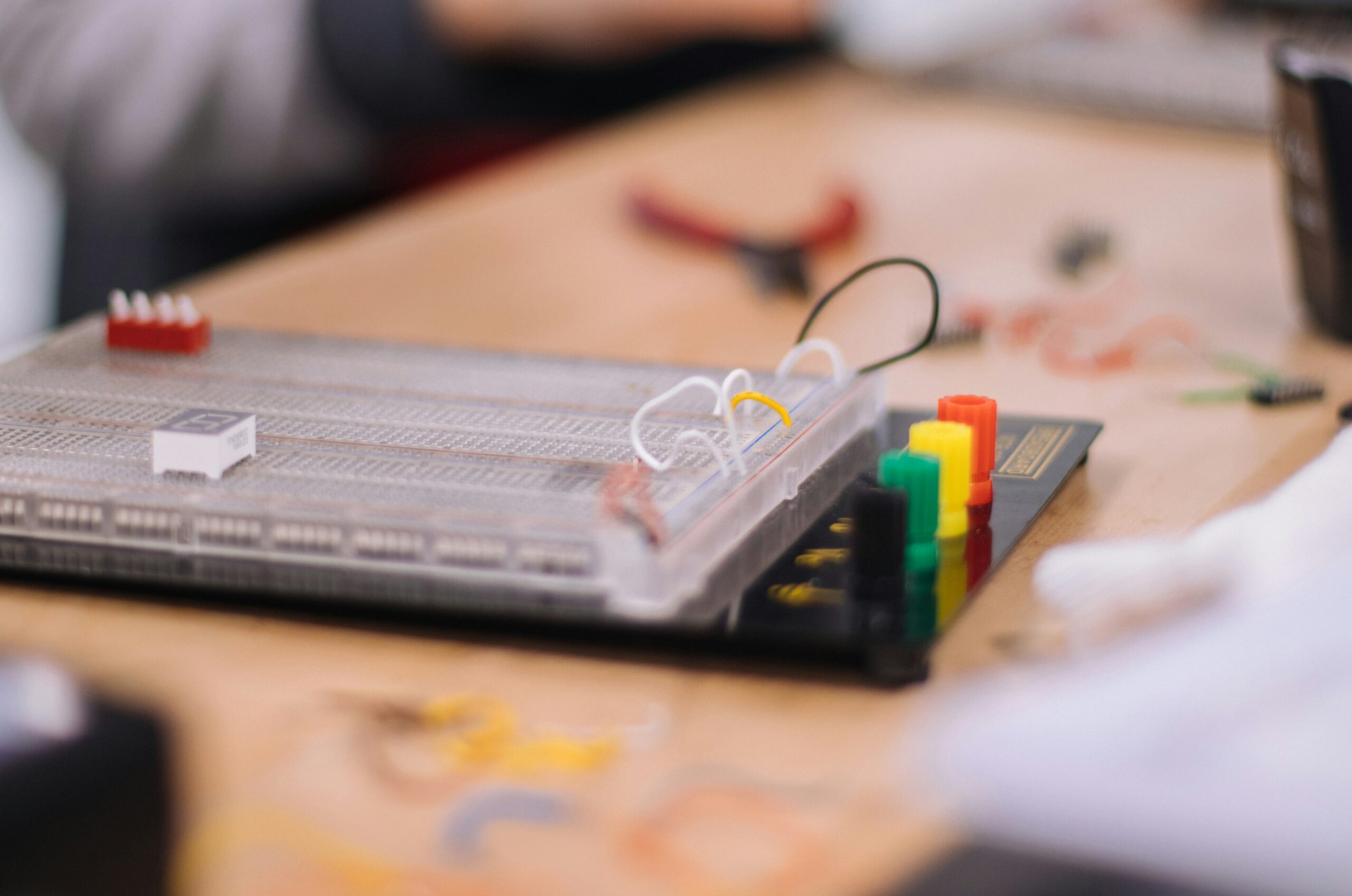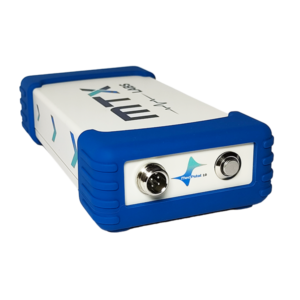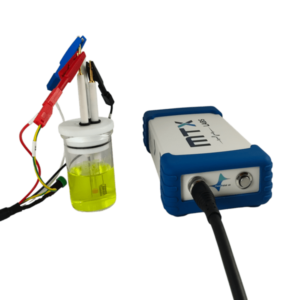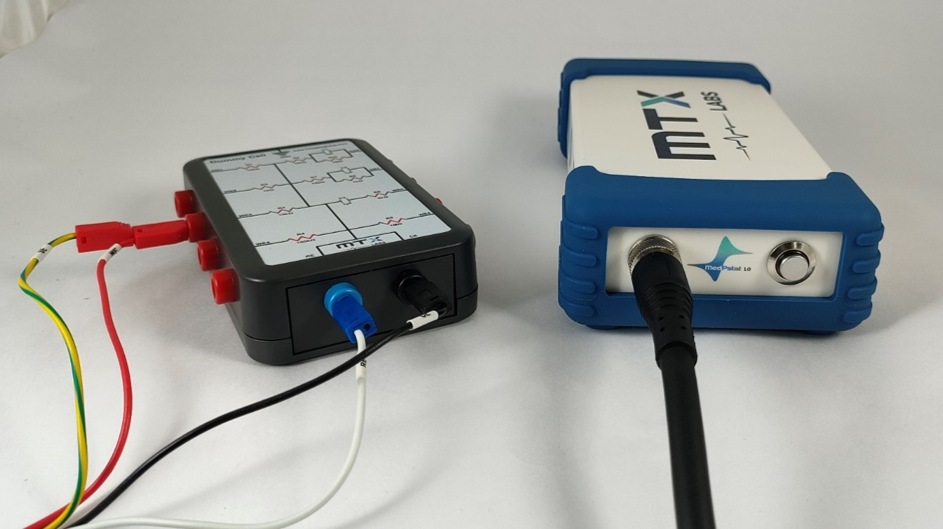This article will give a brief overview of what a potentiostat is, the role of a potentiostat in research and industry, and how they work.
Definition and Terminology
A Potentiostat is an analytical instrument / electronic gadget that measures and controls the potential (or voltage) difference between two electrodes in an electrochemical cell.
The Potentiostat contains many internal circuits that give it this property by generating and measuring potentials and currents. The outer wires you may see connect the Potentiostat to the electrodes in the electrochemical cell.
Classically, a cell will have three electrodes: the working electrode, the counter (auxiliary) electrode, and the reference electrode. These three electrodes will be connected to the Potentiostat through a cable connector.
A Potentiostat can be used in the fields of electrochemistry and biochemistry, but also sensor development and battery research.
When deciding on a potentiostat to purchase, it’s important to know all the essential terms and definitions that the potentiostat comes with.
The name comes from “potentio,” meaning electrical potential, and “stat,” from the Greek word “stato,” meaning steady or set.
How does a Potentiostat work?
A potentiostat applies a voltage to an electrode, which changes the number of electrons on its surface. This causes the surrounding solution (electrolyte) to either release or absorb electrons to balance things out.
The Potentiostat can measure how many electrons are exchanged over time, which is the current at the electrode. This is typically done using a three-electrode setup.

Different Types
There are several types of potentiostats used by electrochemical researchers.
-
A single-channel potentiostat controls the voltage of one working electrode.
-
A bipotentiostat controls the voltage of two electrodes independently.
-
A multichannel potentiostat controls the voltage of more than two electrodes.
-
A galvanostat is a similar device, but it controls the current at the electrode instead of the voltage. Many modern potentiostats also include galvanostat features. The term “electrochemical workstation” is often used commercially to refer to a potentiostat, though it means the same thing.
Potentiostat Software
A portable potentiostat is more useful with the proper software. MedPstat handheld potentiostats come with MedEplot software, which is included for lifetime use. This software makes it easy to use the device and can be installed on several computers or laptops.
Why get a Potentiostat?
When a potentiostat, like the MedPstat, applies a potential (voltage) to a conducting surface in a solution, it causes a specific current to flow at the electrode. The potentiostat then measures this current while keeping the potential constant.
The key advantage of a potentiostat is that it can precisely control the applied potential, unlike a regular power source, while also measuring the resulting current.

Application areas
A potentiostat is mainly used in electrochemistry. For example, it can be used to monitor the amount of pollutants in wastewater, measure the concentration of glucose in blood for medical tests, or study the behavior of materials used in batteries and fuel cells.
Potentiostats are playing a key role in advancing research and industry in major areas like: electrochemistry, wastewater treatment, and energy storage, techniques that are crucial challenges for technology and society.
Potentiostat Costs
MTX Labs has created a range of affordable options for portable, handheld potentiostats without compromising on quality or features.
Related Products
-
Sale!

Handheld Potentiostat/Galvanostat, Electrochemical Analyzer (MedPstat 2.0 Advance)
Original price was: $3,100.00.$2,990.00Current price is: $2,990.00. -

Handheld Potentiostat, Electrochemical Analyzer (MedPstat 1.0 Basic – 30mA)
$799.00 -

Handheld Potentiostat, Electrochemical Analyzer (MedPstat 1.0 – EC Kit)
$1,499.00
Contact us to learn more or to discuss how we can support your research.


